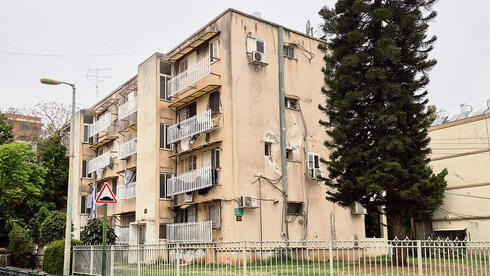Recently, data showed that one in three apartments sold in 2024 was part of an urban redevelopment project – evidence that urban renewal has become a growth engine in Israel’s real estate market.
A new index, developed in partnership with the Urban Renewal Authority and the Israel Real Estate Appraisers Association, examines leading renewal neighborhoods in terms of apartment size, price potential, education, commerce and transport. First up: the Yosseftal neighborhood in Petah Tikva.
4 View gallery
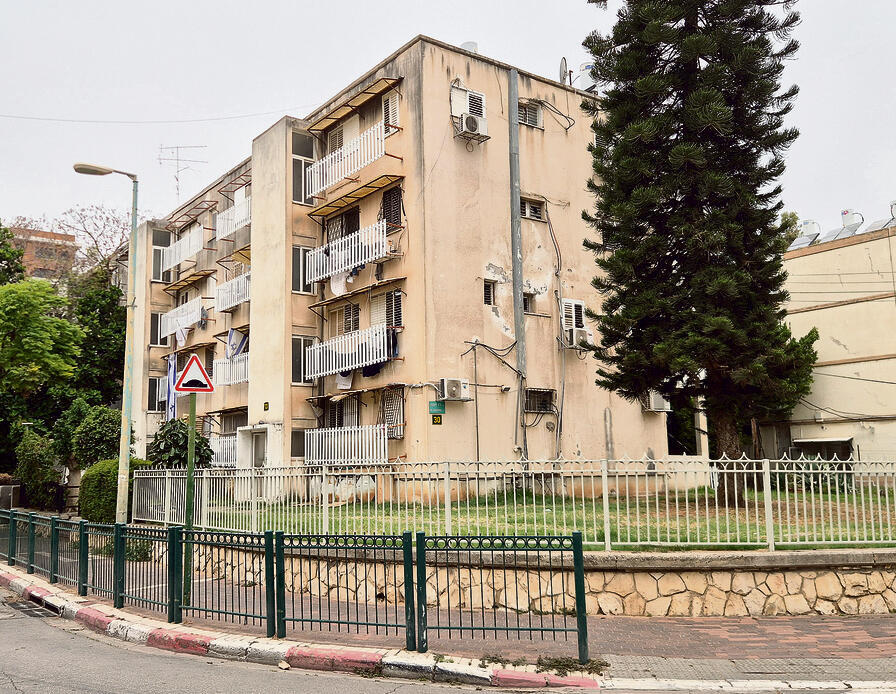

Yosseftal neighborhood – Transformed from immigrant enclave into modern residential hub
(Photo: Yariv Katz)
With land for new construction in Israel increasingly scarce, urban renewal has emerged as the primary growth driver for the local real estate market. The shift from isolated redevelopment projects to comprehensive renewal of entire neighborhoods marks a significant conceptual change in urban planning in Israel. The approach promises not only to increase housing supply and land-use efficiency, but also to strengthen cities and improve quality of life.
Just recently, the government’s Urban Renewal Authority released its 2024 annual report, noting that about 30% of new housing starts were part of urban renewal initiatives, and that every third apartment sold was in an urban redevelopment project. This trend continued into the first quarter of 2025.
Together with the Urban Renewal Authority and real estate appraiser Zerit Szewach of Goldshmidt-Szewach Appraisal Firm, who serves as the chair of the Urban Renewal Committee at the Real Estate Appraisers Association in Israel, a new index was developed for Ynet and Yedioth Ahronoth. It highlights neighborhoods in major cities due to undergo intensive renewal, involving the demolition of older public housing blocks to make way for thousands of new units. The first neighborhood in the index is Yosseftal in Petah Tikva, which is now in advanced planning stages.
The index aims to reveal current conditions and estimate future scenarios in each neighborhood. The “current situation” analysis examines housing characteristics, public-space area, green and commercial space, density per dunam, educational institutions and the population’s demographic profile. An appraiser’s assessment also considers urban renewal’s impact on neighborhood prices.
As for the “future situation” analysis, the index evaluates what residents will receive in return (new apartment sizes and features), what infrastructure will be developed, how the neighborhood’s appearance will change and how the Urban Renewal Authority plans to address potential gentrification – new, wealthier residents displacing the economically weaker population.
Built after Israel’s War of Independence on the former Arab village of Fajja, Yosseftal is home to about 5,000 residents.
Located in the eastern part of Petah Tikva, it is bounded by Jerusalem Road (Highway 40) and Kfar Avraham to the west, the former Sirkin military camp to the east, Highway 483 and the HaPoel HaMizrahi housing to the north, and the Kiryat Alon neighborhood to the south.
In recent years, it has become an important hub for immigrant absorption and social integration, and is considered a model immigrant neighborhood. The population is diverse, with nearly one-third of residents of Ethiopian origin and a significant number from the former Soviet Union.
The neighborhood contains 1,384 housing units:
• 998 old public-housing apartments, each about 60–75 m² (about 645–807 sq ft) with 2.5-3.5 bedrooms, in low-rise buildings from the 1950s and 1960s (3–4 stories).
• 386 units in detached and cluster homes built in the 1990s and 2000s, which are not included in the urban redevelopment project.
Half of the apartments are rented, with 4% designated as public housing.
The comprehensive renewal plan for Yosseftal is set to transform it into an urban neighborhood with thousands of new housing units.
Planning began in early 2020, and the public review process concluded in August 2024. The plan includes demolition of the 998 old apartments and construction of 3,410 new units, additional construction of 347 new units approved under other plans, and 543 units on currently undeveloped land.
Total planned units for the entire neighborhood are approximately 4,686, expected to house around 15,000 residents.
4 View gallery
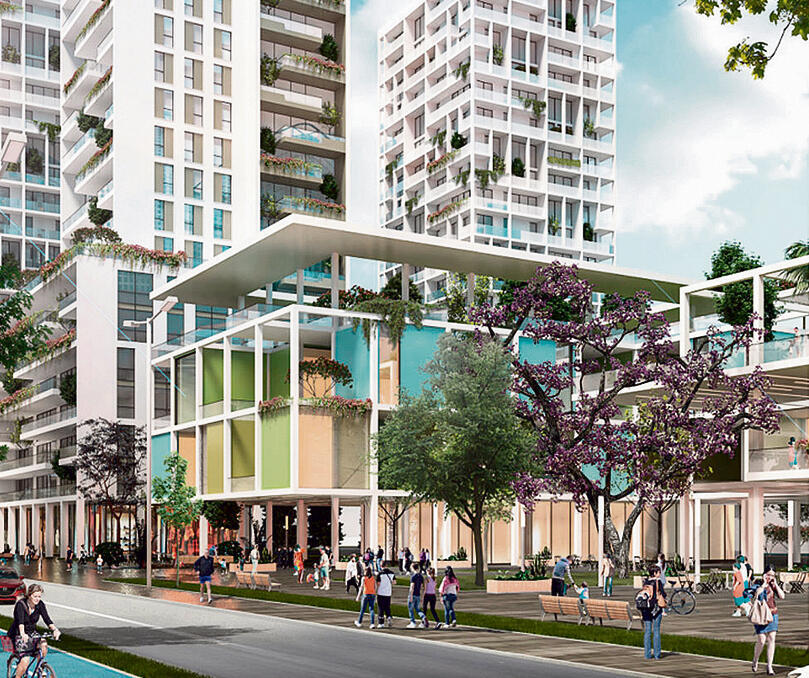

Imaging of Masaryk Street upon project completion: Buildings to range from 8 to 26 stories
(Illustration: Barre Levie Architects & Urban Planners)
The layout is of 13 complexes of urban redevelopment, plus a high-density development zone to accommodate residents of ground-level houses set for demolition, helping to connect the neighborhood eastward to the planned “Yarkon View Quarter” on the former Sirkin military camp site.
The layout design envisions residential buildings rising along main streets, from 8 to 26 stories, above commercial space. Presently, the net density is about 10.2 units per dunam; under the new plan, density will increase to approximately 33.8 units per dunam. For context, older low-rise neighborhoods typically range from 4–8 units per dunam, while high-rise areas can reach 20–40 units per dunam or more. Higher density allows more efficient land use, but requires careful planning of public spaces, infrastructure, transportation, and parking.
Last February, Petah Tikva’s local committee for planning and construction held a hearing on objections submitted to the Yosseftal neighborhood’s urban renewal plan. The city ultimately recommended rejecting most of the claims. Developers raised a variety of objections, including requests to increase the number of housing units and floors, as well as concerns over the economic feasibility analysis.
Major developers involved include Boney HaTichon, Tidhar and Kardan Real Estate. The objection process ended, and a decision from the district planning committee is expected in the near future, either approving the plan as is or accepting some of the objections.
4 View gallery
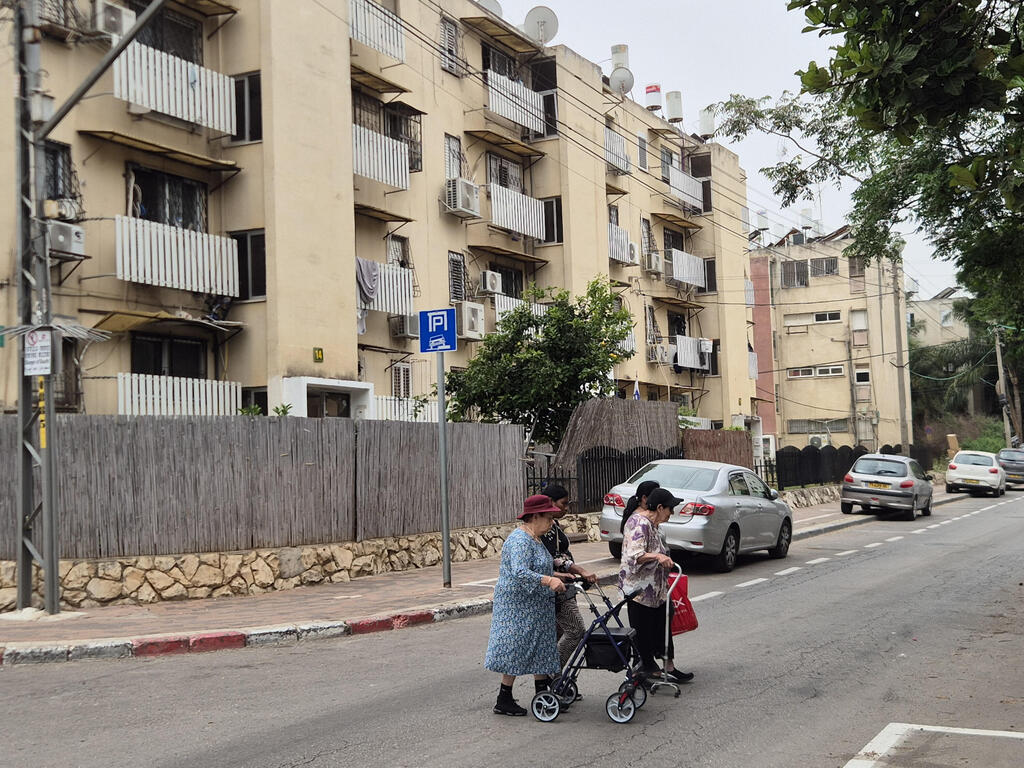

First Signs of renewal expected in 5–6 Years: Yosseftal Neighborhood in Petah Tikva
(Photo: Yariv Katz)
If approved, the plan is expected to be finalized and receive its first building permits within three to four years, with visible signs of renewal on the ground anticipated only in five to six years.
The submitted plan offers each current resident a new apartment that is 12 square meters (about 129 square feet) larger than their existing one, along with a 12-square-meter balcony (about 129 square feet) and a parking space.
According to the appraiser’s report, the “unit multiplier” (the ratio of old units to new) is expected to range from 3.5 to 4. The plan was drafted according to Standard 21, a professional guideline recommended by Israel’s Chief Appraiser at the Ministry of Justice. It sets criteria for balancing the interests of all parties involved in the urban renewal project, including how to assess land value, which expenses to include, and what constitutes a fair developer profit – all factors that determine how many units can be built.
This multiplier is critical to the project’s economic viability, particularly for developers, as new apartments built beyond those allocated to current residents are sold on the open market, providing developers with their profit. The higher the multiplier, the more financially attractive the project becomes.
Appraiser Zerit Szewach noted that current apartment prices in Yosseftal already reflect the neighborhood’s renewal potential. Prices have risen since the project was announced, even before implementation. New units allocated to residents are expected to be significantly more valuable than their old apartments.
Currently, the average price in Yosseftal is NIS 26,000 (about $7,000) per square meter, projected to reach NIS 28,000 (about $7,540) per square meter after the renewal. Based on these figures, a 2.5-room, 60-square-meter (about 645-square-foot) apartment currently sells for approximately NIS 1.56 million (about $420,000). A new 72-square-meter unit (about 775 square feet) would be worth around NIS 2 million (about $540,000).
The average monthly rent for a 2.5-room, 60-square-meter apartment is NIS 3,600 (about $980), yielding a 2.76% return. In comparison, new four-room apartments in nearby neighborhoods, priced at around NIS 29,500 per square meter (about $7,950), rent for roughly NIS 7,000 per month (about $1,880), with a return of 3%. Rent for new apartments in the Yosseftal project is expected to average around NIS 5,300 (about $1,420) per month, with a similar return.
Yosseftal is currently served by multiple bus lines from across the Tel Aviv metropolitan area, operated by Egged and Metropoline, including intercity routes from Haifa and Jerusalem. The neighborhood is relatively close to Petah Tikva’s central bus station, where a station for the Tel Aviv light rail’s Red Line is already operational. A future extension of the Red Line is planned nearby.
While no metro or light rail stations are planned within Yosseftal itself, the neighboring Yarkon View Quarter will include the “Sirkin North” metro station, located less than one kilometer (0.6 miles) from Yosseftal’s center.
The renewal plan includes new roads and pedestrian pathways to connect Yosseftal with the adjacent Yarkon View Quarter, integrating the neighborhood into Petah Tikva’s ongoing transportation overhaul. Yosseftal will also feature a new network of bike lanes and widened roads and sidewalks.
Due to the expected population growth from thousands of new apartments, the city plans to upgrade local roads, especially Highway 40. That highway will be rerouted through a new road tunnel beneath a park connecting Yosseftal with the future Sirkin neighborhood. This is expected to reduce traffic along the existing Highway 40 and redirect cross-city traffic underground toward Highway 5.
4 View gallery
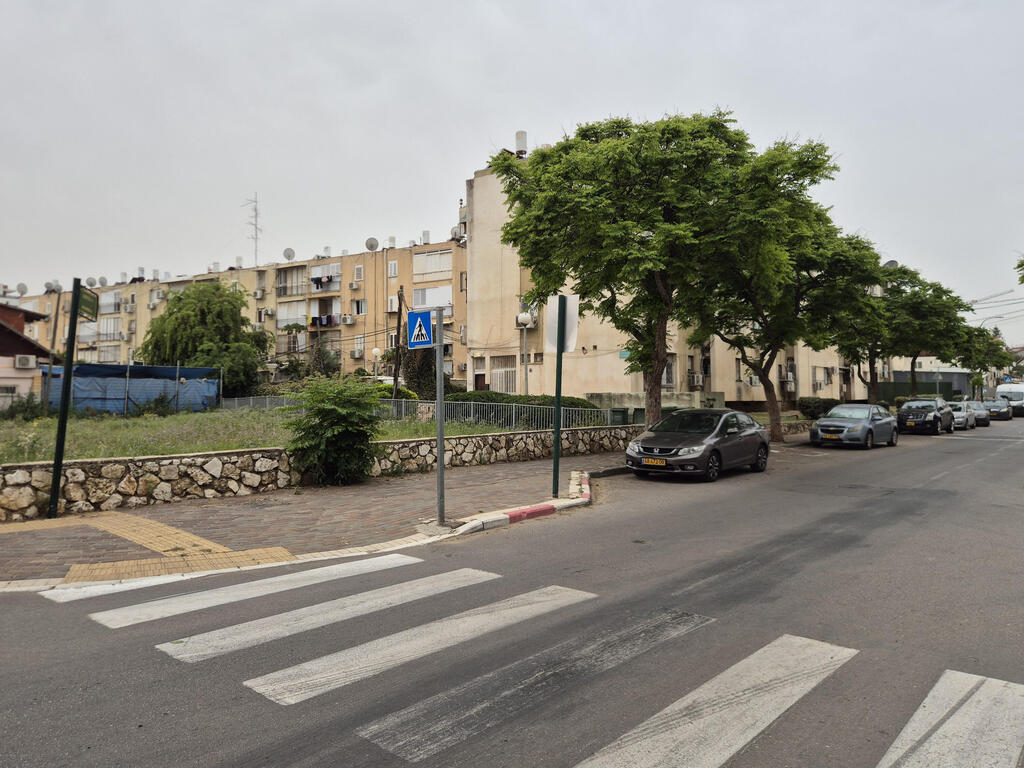

Yosseftal, Petah Tikva
(Photo: Yariv Katz)
Architects Eran Leshem and Eran Shacked, co-owners of CityBee Architects, who are involved in dozens of urban renewal projects in Petah Tikva, including the Yosseftal neighborhood, emphasize the city’s unique location in the heart of Israel’s central region. “Yosseftal is a clear example of renewal that leverages its central location and transport access,” they said. “With planned density increasing from 10 to 34 units per dunam and proximity to the future Sirkin North metro station, the neighborhood is poised to become even more integrated into Greater Tel Aviv’s job and entertainment hubs.”
The renewal plan includes significant space allocations for public use. Yosseftal covers 340 dunams (about 84 acres). Of that, 34.5 dunams (about 8.5 acres) will be allocated for public open space, including a 15.5-dunam (about 3.8-acre) park along the Mazor Stream on the neighborhood’s eastern edge.
An additional 46 dunams (about 11.4 acres) will be dedicated to public facilities, including 3.7 dunams (about 0.9 acres) allotted for a swimming pool, sports fields, a gym and other fitness facilities, subject to the municipality’s discretion, often following resident surveys.
Currently, the neighborhood has about 10 kindergartens and one Yeshiva (religious boys’) high school. The plan calls for the construction of four new elementary schools, one high school, 23 preschools, day care centers, synagogues, community centers and clinics.
Commercial space totaling about 10,400 square meters (about 112,000 square feet) and employment areas totaling about 13,000 square meters (about 140,000 square feet) are also included to meet residents’ daily needs and provide job opportunities.
Yosseftal is one of four neighborhoods selected for a pilot project under the government’s “Renewing Neighborhood” initiative, launched by the Urban Renewal Authority. Designed to span at least five years, the program aims to support residents of older apartment blocks throughout the redevelopment process, with a particular focus on strengthening community integration in advance of the intensive urban redevelopment efforts expected to pose challenges for the neighborhood’s more vulnerable populations.
The initiative is a joint effort between the Urban Renewal Authority and the Urban Renewal Research Center, operated by the Shahaf Foundation and Yad Hanadiv. In addition to Yosseftal, the project will run in the Ben Gurion neighborhood of Ramla, the Giora neighborhood in Or Yehuda, and Neighborhood C in Be’er Sheva.
The program will fund the hiring of dedicated neighborhood staff in each participating neighborhood, who will work toward locally tailored social goals. These will be set by steering committees within the respective municipalities, based on the neighborhoods’ specific needs and characteristics.
Goals will focus on community resilience, education, welfare, employment and public spaces. The Urban Renewal Research Center will also allocate supplemental funding to support activities and professional consultants essential for developing social infrastructure.
According to the outgoing CEO of the Government Authority for Urban Renewal, Mr. Elazar Bamberger, the Yosseftal project is part of a broader renewal framework in Petah Tikva, unique in that it proposes a comprehensive overhaul of an entire neighborhood, not just a specific site, addressing every necessary aspect.
This full-scale planning allows for higher-quality, more holistic solutions, offering residents an entirely new living reality with upgraded public space, civic buildings and green areas.
Bamberger added that the plan will create a pleasant and secure residential environment, transforming Yosseftal from a marginal area into an integral part of the urban fabric. The physical overhaul will be accompanied by robust social investment, including community engagement during planning, resident organizing support, and efforts to strengthen communal and social networks.
Einav Atzmon, head of Cramim, Petah Tikva’s municipal urban renewal authority, noted a key concern among long-time residents: the cost of managing high-rise buildings post-redevelopment. “This plan incorporates social and planning efforts to ensure sustainable urban renewal, balancing long-term economic, social and environmental needs,” she said.
She explained that developers will cover building maintenance costs for the first eight years to ease the financial burden on residents. In older buildings, monthly maintenance fees typically range from NIS 50 to 150 ($13 to $40), covering stairwell cleaning, minor repairs and gardens. In contrast, new high-rises include elevators, underground parking, advanced security systems, landscaped grounds and luxurious lobbies, raising maintenance costs to several hundred shekels per month.
Atzmon explains that the goal is to prevent longtime residents from selling their new apartments because of being unable to pay the high maintenance costs.
To address this, the plan includes a dedicated maintenance fund, typically established by the developer to help subsidize monthly building fees for a defined period, after which residents are expected to assume full costs. “The fund is a vital tool for maintaining social balance in urban renewal projects,” Atzmon said.
Architects Eran Leshem and Eran Shacked echoed this point: “The city is actively preserving neighborhood diversity by requiring developers to cover maintenance for eight years, preventing longtime residents from being forced out. Retaining the original community is key to any successful renewal effort.”
Atzmon also announced that 46 housing units will be offered at reduced rent for low-income residents. “This will ensure diverse demographics in the renewed neighborhood,” she said. These units will be leased in accordance with Appendix 6 of Israel’s Planning and Building Law, which governs long-term and reduced-rent housing.

